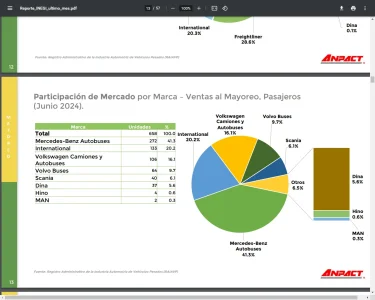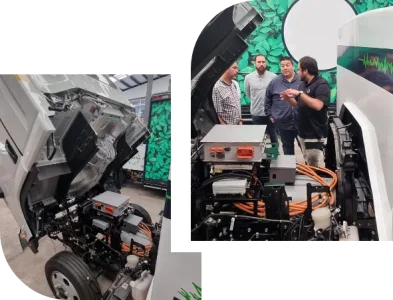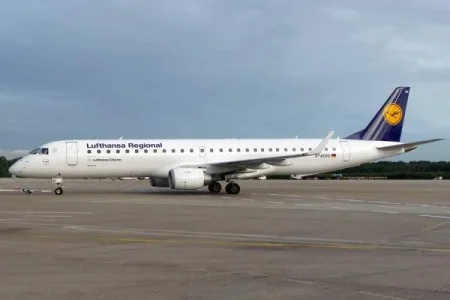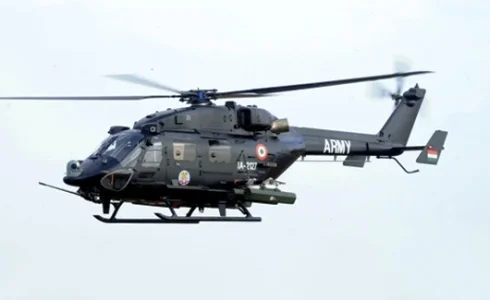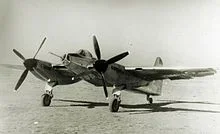Development of combat aircraft in the PRC based on MiG-23 fighters transferred by Egypt
In 1974, after the defeat in the "Yom Kippur War", the Egyptian Air Force and Air Defense were strengthened by additional supplies from the USSR. Egypt became one of the first importers of the MiG-23 family of aircraft, having purchased 8 MiG-23MS fighters, 8 MiG-23BN attack aircraft and four MiG-23UB trainers in 1974, concentrating them in a squadron based at the Mersa Matruh airbase in the northwest of the country.
The export modification of the MiG-23MS fighter was deprived of one of the main trump cards inherent in the "twenty-third": unlike the MiG-23M/MF with the Sapphire-23 radar, it could not carry R-23 medium-range missiles and was equipped with a simplified Almaz-23 weapons system (similar to the S-21M weapons system of the MiG-21bis aircraft) without a heat finder and with the Sapphire-21 radar. The fighter with a maximum takeoff weight of 18,400 kg had a practical flight range of 1,450 km. At high altitude, the MiG-23MS could reach a speed of 2,500 km/h, and at ground level - 1,350 km/h. The five hardpoints accommodated a combat load of up to 2,000 kg, and the built-in armament was a 23-mm GSh-23L cannon (200 rounds of ammunition).
The MiG-23MS had good acceleration characteristics, but was inferior in close maneuvering combat to almost all modifications of the MiG-21. In terms of target detection and missile launch range, it was no better than the much cheaper and easier to maintain MiG-21bis. In addition, all modifications of the MiG-23 placed increased demands on the pilot's qualifications and were difficult to maintain.
After the cooling of relations with the USSR, the operation of the MiG-23 in Egypt became problematic, and these aircraft turned into a "suitcase without a handle" that was both a pity to throw away and impossible to carry. It was just in time for the Egyptians to find foreign buyers for the "twenty-third": several aircraft were bought by the Americans for testing in 1978, and six MiG-23MS/BN/UB were sent to China.
A certain number of MiG-23s in Egypt were in flying condition until 1980, after which the remaining aircraft were put into storage. Now one Egyptian MiG-23MS is on display in a museum.
The Americans had a lot of trouble with the MiG-23, as preparation for each flight turned into a special operation for the technical staff. In addition, the aircraft was very strict in control. The MiG-23MS and MiG-23BN were lost in air crashes.
Now one MiG-23MS from this batch with red stars applied to it is on display in the National Museum of the US Air Force.
In addition to studying the capabilities of the "twenty-third" family of aircraft, the PRC made an attempt to create its own attack aircraft. This was due to the fact that by the end of the 1970s, the PLA Air Force was faced with the issue of updating its fleet of specialized attack tactical aircraft.
The Q-5 attack aircraft, created on the basis of the J-6 fighter, was generally good, but had a small combat radius and a small combat load. The H-5 frontline bomber (a copy of the Il-28) was outdated by that time and was too vulnerable to ground-based air defense systems and interceptor fighters.
China avoided discussing the topic of buying Soviet aircraft from Egypt for a long time, but about 10 years ago, photographs of the MiG-23MS appeared next to the American F-5E fighter received from Vietnam for study.
In the mid-1970s, the Shenyang Aircraft Plant design bureau began creating a strike aircraft based on the J-8 interceptor (a functional analogue of the Soviet Su-9), but it soon became clear that the heavy delta-winged aircraft, originally designed for high-altitude interception, was very poorly suited for low-altitude operations, and this option was abandoned.
J-8 Interceptor Fighter
It was decided to build a multi-mode combat aircraft with a variable-geometry wing that could perform high-speed dashes and, at the same time, with minimal wing sweep, have satisfactory maneuverability at low altitudes and good takeoff and landing characteristics. The design of this aircraft, designated Q-6, was carried out in the Nanchang Aircraft Plant design bureau. Many components and assemblies of the MiG-23 were copied.
The takeoff weight of the aircraft was not to exceed 14,500 kg, the combat load was not less than 4,500 kg. The combat radius was not less than 900 km. In terms of strike potential and the ability to conduct a defensive air battle, the Q-6 was to surpass the MiG-23BN.
Although the design of the Q-6 was largely based on the MiG-23, for some reason the Chinese designers decided to abandon the side air intakes and used an air intake in the lower part of the fuselage.
The expected appearance of the Q-6 fighter-bomber
Initially, the Q-6 was planned to be equipped with a full-fledged multi-mode radar, created on the basis of the American AN/APQ-113 station, removed from an F-111 bomber that crashed in the jungles of Vietnam. But the Chinese electronic industry was unable to reproduce this radar in acceptable weight and size characteristics. After the failure to copy the American radar, it was decided to equip the aircraft with a terrain following radar (based on the AN/APQ-110), a laser
target designation system, Doppler radio altimeter, radar warning station and active jamming equipment.
However, even having working samples of onboard equipment of American and Soviet origin and having understood the principles of operation, the weak electronic industry of the PRC did not allow Chinese engineers to reproduce them. A significant part of the electronic units had to be made not on the basis of semiconductor elements, but on the basis of vacuum tubes, which inevitably led to an increase in weight, dimensions and energy consumption.
At that time, China did not have a suitable aircraft engine, and it had to be created from scratch. The promising WS-6G turbofan engine, developing a thrust of 77 kN, with afterburner - 138 kN, had a service life of no more than 50 hours. The WP-15 turbofan, a copy of the Soviet R-29-300 engine, producing 85.1 kN without afterburner and 125.5 kN with afterburner, turned out to be very capricious and did not satisfy the Chinese aircraft designers. The development of the WS-9 turbofan (a copy of the British Rolls-Royce Spey Mk. 202) took too much time.
Copying the wing sweep mechanism caused great difficulties. Although the Chinese specialists had the original Soviet model at their disposal, the reverse engineering method did not work well this time. It took a long time to achieve reliable operation of the mechanism, and in the end it turned out to be 15% heavier than the one used on the MiG-23, which reduced the fighter-bomber's payload, fuel tank capacity and, as a result, combat radius.
As a result, the development of the promising Q-6 combat aircraft dragged on for too long. The high degree of novelty, the technological backwardness of the Chinese aviation industry, the lack of necessary experience and scientific and design base did not allow the ambitious program to create its own analogue of the MiG-23 to be implemented. And although certain positive shifts were outlined and the developers proposed an improved Q-6B, after the appearance of the frontline bomber with a fixed wing JH-7 Flying Leopard in the late 1980s, the Q-6 program was finally curtailed.
One of the first prototypes of the JH-7
The JH-7 bomber, created by the Design Bureau of the Xi'an Aircraft Manufacturing Enterprise, was smaller in size, carried a greater combat load and had a greater range. The key to the success of the JH-7 bomber was the use of relatively simple and understandable technical solutions already mastered by the industry, as well as technological assistance from Western countries, copying foreign components and assemblies.
Aviation experts consider the JH-7 to be a functional analogue of the Soviet Su-24. Although the Chinese aircraft is inferior to the Su-24 in a number of parameters, at the same time it is much simpler in design. The appearance of the JH-7 Flying Leopard strike aircraft, produced at the aircraft plant in Xi'an, was greatly influenced by the American multirole heavy fighter McDonnell Douglas F-4 Phantom II. Moreover, the avionics of the JH-7 supersonic bomber used analogues of the electronic systems of American combat aircraft captured in Vietnam. The first series of Flying Leopards were equipped with British Rolls-Royce Spey Mk. 202 turbofan engines (originally intended to equip the deck Phantoms of the British Navy), and then WS-9 engines.
The early serial modification of the JH-7 bomber had a maximum takeoff weight of 27,500 kg. At high altitude, the JH-7 could accelerate to 1,795 km/h. The practical range is 2,600 km. The combat load is 6,500 kg. By 2019, about 270 JH-7, JH-7A and JH-7AII aircraft had been built.
However, it cannot be said that the work on the Q-6 aircraft was a waste of time and money. During the creation of this multifunctional combat vehicle, Chinese specialists, having gained many bumps and bruises, gained the necessary experience. The creation of a fly-by-wire control system (FBW), which was subsequently used on other Chinese aircraft, is considered successful.
In addition, some elements borrowed from the MiG-23 (air intake, folding ventral ridge, some equipment) were implemented on the J-8II interceptor, which is close to the Soviet Su-15 in terms of flight data and appearance, but structurally these are different machines.
J-8II interceptor fighter at the Le Bourget Air Show in 1989
The J-8II interceptor traces its lineage back to the J-8 aircraft (first flight in 1965). The main drawback of the J-8 interceptor was the impossibility of installing a large radar on it, which is due to the limitations imposed by the size of the air intake cone.
The conical nose of the J-8II initially housed the SL-4A (Type 208) radar with a detection range of up to 40 km. Flight performance was improved by installing more powerful engines and reducing aerodynamic drag. In addition, the radically modernized interceptor became more robust.
In the late 1980s, the Americans provided significant assistance in improving the sighting and navigation system, communications and weapons of the J-8II. The aircraft was equipped with an SL-8A radar with a detection range of 70 km, equipment
До середины 1970-х одним из крупнейших получателей современного на тот момент советского оружия являлся Египет. Однако через несколько лет после поражения в «Войне судного дня» египетский президент Анвар Садат резко изменил внешнеполитический курс, и в 1979 году при посредничестве Вашингтона был

topwar.ru
With looks similar to that of the DC-9, the Comac ARJ-21 is a Chinese regional jet now under development that uses GE engines, a Honeywell fly-by-wire system and Rockwell Collins avionics
.
The Xian MA60 is a Chinese turboprop regional airliner based directly on the Antonov An-24.
The Changhe Z-11 developed in the 1990s is a close copy of Eurocopter’s ubiquitous AS350.
The Changhe Z-8 and Aerospatiale Super Frelon appear very similar.
The Harbin Z-9 is a licensed-built version of today’s Eurocopter EC 155.
These Chinese aircraft look familiar, but they say imitation is the sincerest form of flattery.

www.flyingmag.com
